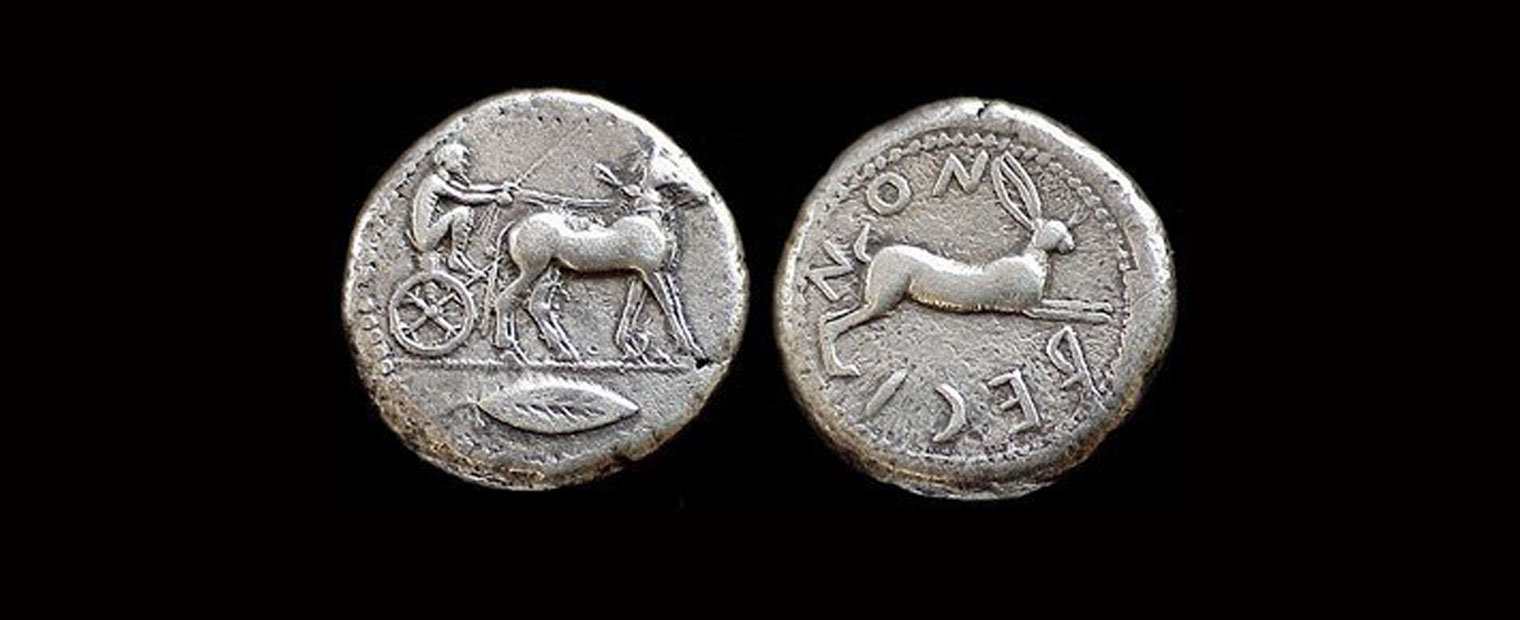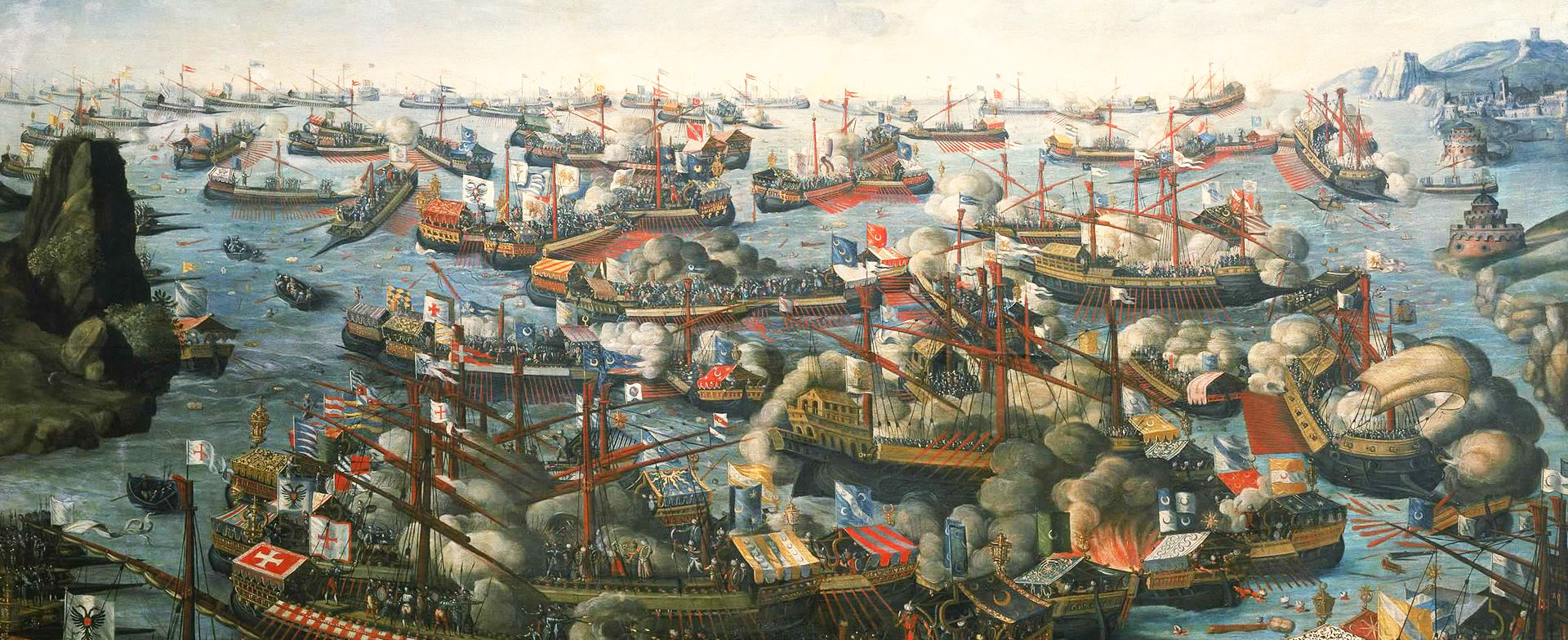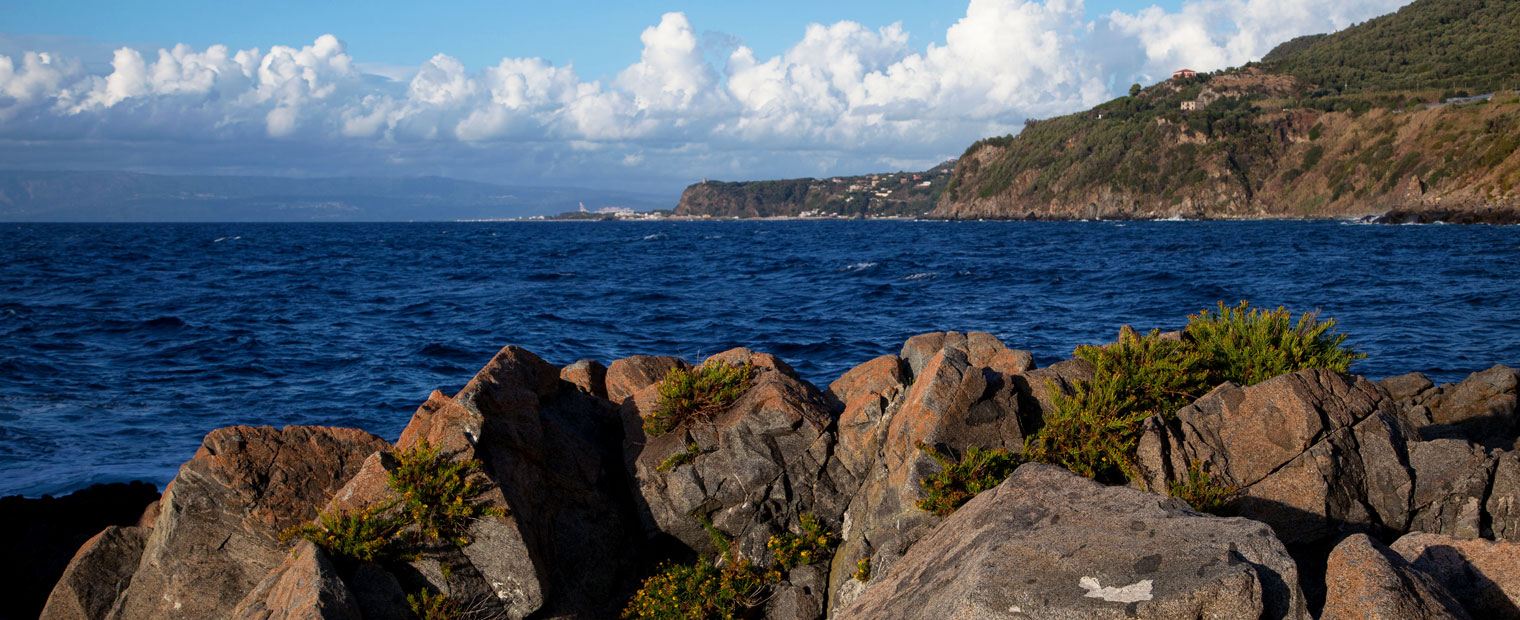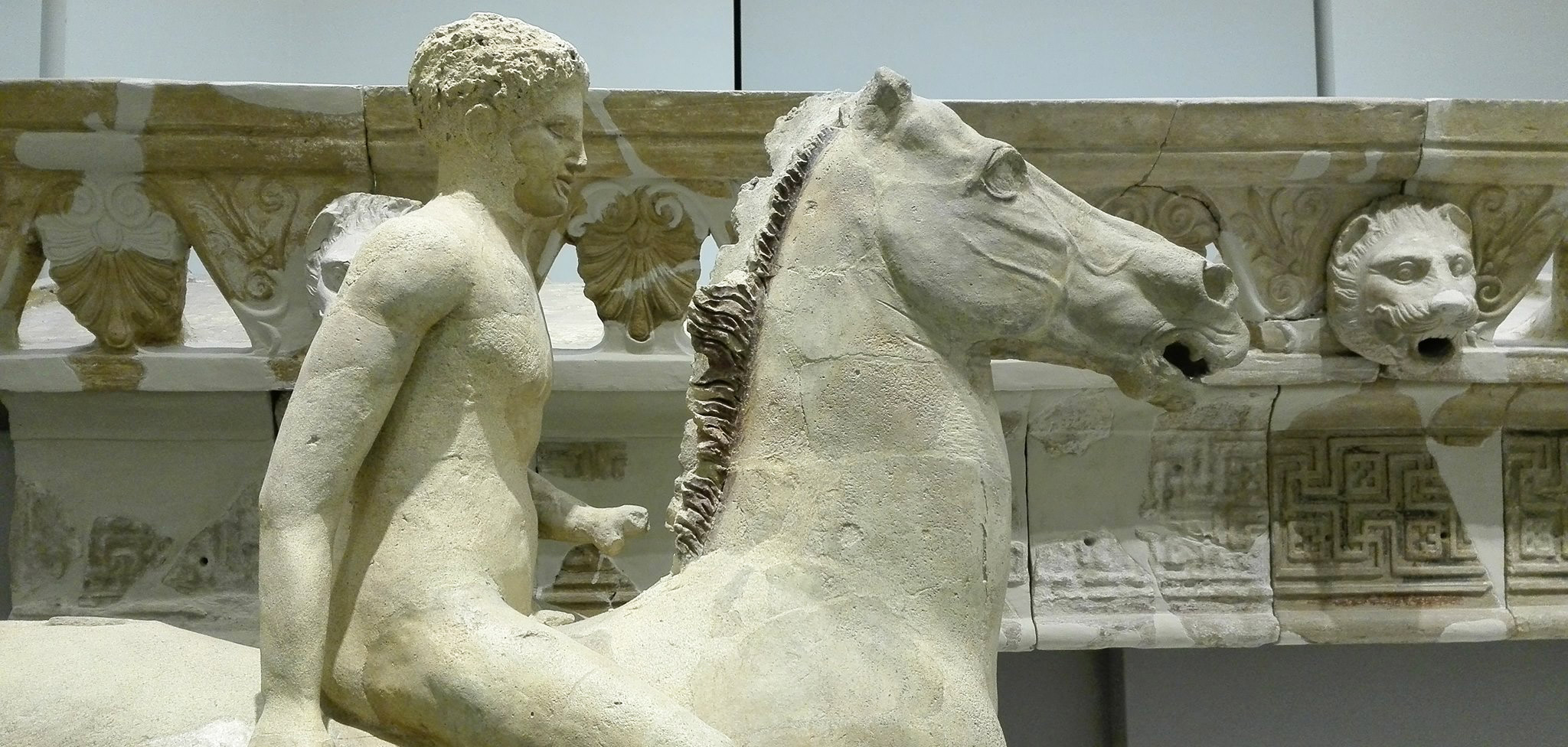Sources call him Anaxilaos or Anaxilas. The latter version would seem to be a more suitable name for a character who came from Messenia, the Peloponneso region. However, the oldest source that mentions his name, Herodotus, names him as Anaxileos.
He was a character of the highest level, a descendant of one of the mythical generals of the war between Spartans and Messenians in the Peloponneso, which was, among other things, his namesake. This information immediately brings to light the ability of Rhegion’s ancient polis to develop around a strong union between an Ionian lineage, the Chalcidesi and Doric, and the Messenians.
The military quarters of the city were entrusted to the Dorians because of their strong military skills. In this context, Anassila entered this stage of history after a dramatic defeat of Reggio in the very first years of 5th century BC by the Zanclei and Locri. This defeat was also described in Olympia on some marble plaques dedicated to Zeus by the Locri and Zanclei people.
From defeat to Reghion, capital of the Strait
It was a terrible defeat if Reggio’s first coin is taken as a testimonial source, which depicts a man-faced bull and the Kaikinos River on the border between Reggio and Locri. This battle was fought to maintain the promontory of Capo Spartivento, which was strategic for the control of navigation to Greece.
The defeat generated the collapse in Reggio of the so-called “thousand tyrants” government and the rise to power of General Anassila (in 494 BC) who first settled in the Acropolis of Reggio, in the current area belonging to the former barracks of the Duke of Aosta.
His first commitment was to go to Locri to restore peace, giving up Capo Spartivento and shortly afterwards from Locri passed settlers from Samos invited by the tyrant of Zancle to establish a city in Kalè Akté near Milazzo. Anassila, however, displaying brilliant diplomatic skills, convinced them to take ancient Messina.
In 488, he took advantage of the escape from Messenia by a new community of citizens whom he would convince to align with Reggio to occupy the neighbouring Zancle. The operation was successful and would give rise to the foundation of Messene.
It was a particularly lively historical moment marked by numerous conflicts in which Hippocrates of Gela tried to give life to the first great tyranny that united all of Sicily and Magna Grecia.
After him, Gelone, Ierone, and Dionisio would follow. Reggio, however, rejected these attempts and pushed for a division of the respective areas of influence. Anassila, therefore, took Messina and moved there while the tyrant of Reggio was taken by his son, Kleofron. Reggio and Messina shared the same currency.
During this period, Reggio assumed a predominant position on the traffic and routes of the Strait. It was a clear vision that was manifested by a series of great initiatives throughout the territory. Anassila also took care to strengthen its presence near Sicily by setting up a military naval base against pirates and, in parallel, also made a great leap inland, in Aspromonte, building about forty fortresses also useful for supplying Reggio with wood. He also occupied Metauro, currently Gioia Tauro, to control the routes to Sicily and founded Milazzo. Deceiving the people regarding the defeat of Imera, he won the chariot race in Olympia in 480 (the same year as the defeat), and the coin depicting the titan Helios who carried the chariot of the sun pulled by mules in the collective imagination would recall precisely Anassila.
Also, while in Olympia, Anassila called the greatest poet Simonide to ask him for an epinicium. The episode was reported by Aristotle as well, who underlined the pecuniary effort made by Anassila to convince the poet to perform the choral victory song: “Hello daughters of the storm-footed mares”.
Anassila also managed to find time to invade Locri to recover the famous Capo Spartivento. This happened in 478 and in 476 Anassila died after roughly 20 years in power. He left us with a phrase spoken in response to the question, “What could be more beautiful than the making of a monarch?” to which he replied, “Nobody can outdo me in doing good”.
Anassila understood the central role that Reggio could play in the commercial control of the Strait. He was also aware that the political and economic union of the two cities, Reggio and Messina, would bring great development and prosperity to the entire area. This was his first true conurbation idea of the Strait. Reggio, therefore, had begun to emerge as a large transhipment port ante litteram where all ships unloaded on the Calabrian side of the Strait.
The Tyrant and the artifacts at the MARC in Reggio Calabria
Two great traces of Anassila are found today in the museum of Reggio Calabria: the Kuros apollo reggino, a statue from around 494 BC that seemed to be a gift from the tyrant to the polis. When in 461 the sons of Anassila were hunted, they buried the precious statue and in its place the rulers made room for the statue of Zeus Eleutherios that was free from tyrannies; this latter artifact is also on display in the museum and is named "The Head of Basel".



